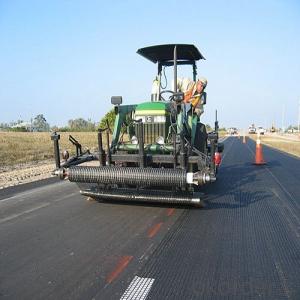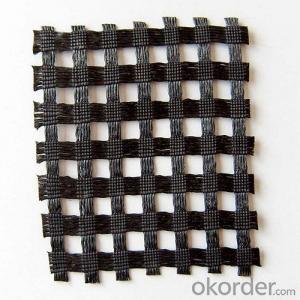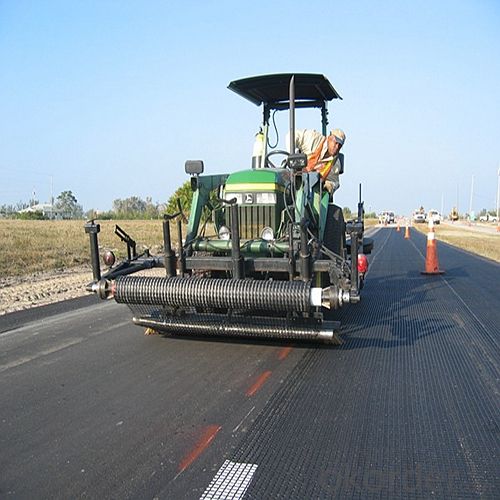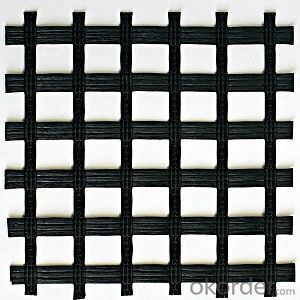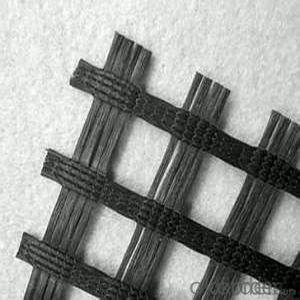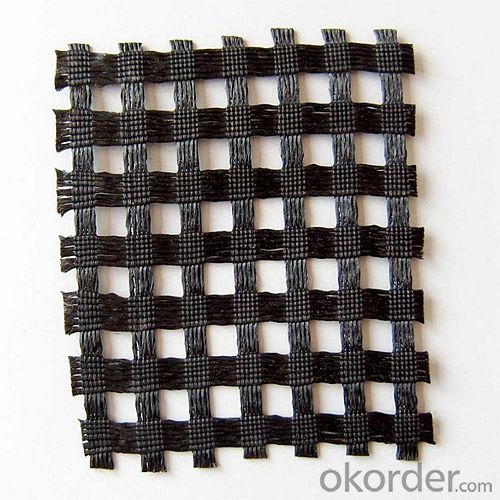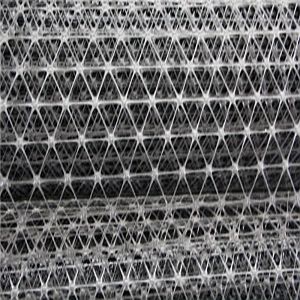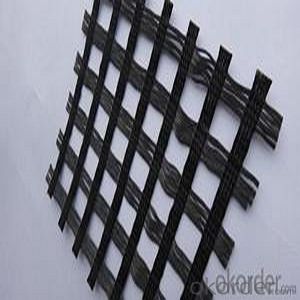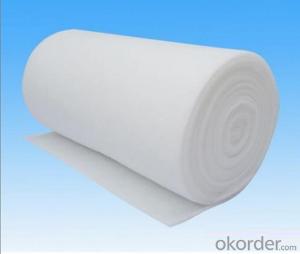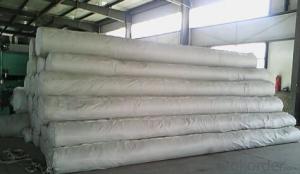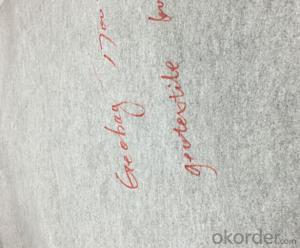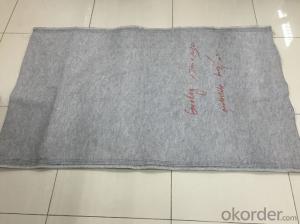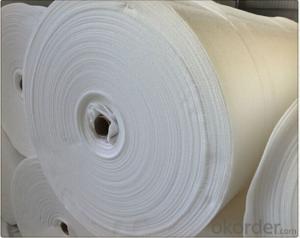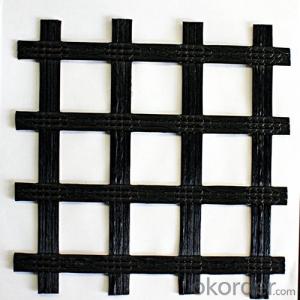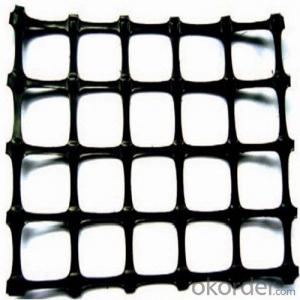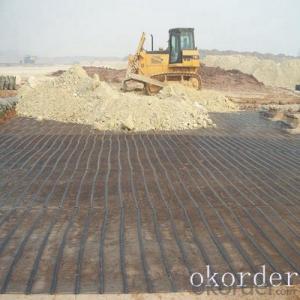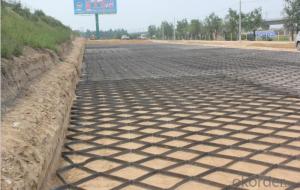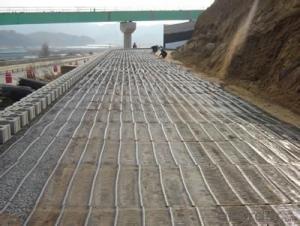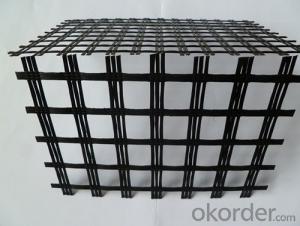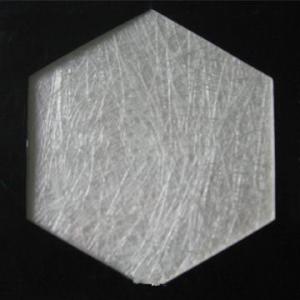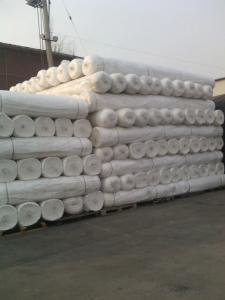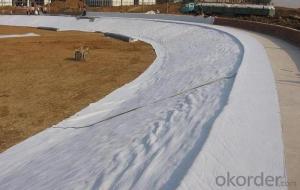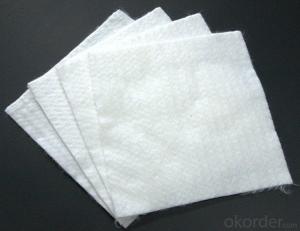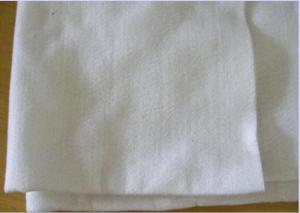Apu Geotextil Fiberglass Polypropylene Geogrid Roadbed Reinforcement for Highway and Railway
- Loading Port:
- China main port
- Payment Terms:
- TT OR LC
- Min Order Qty:
- 1000 m²
- Supply Capability:
- 1000000 m²/month
OKorder Service Pledge
OKorder Financial Service
You Might Also Like
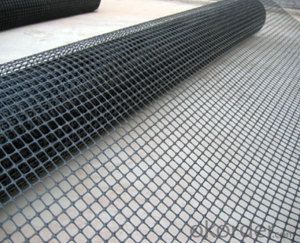
Introduction
Geogrids form a distinct category of geosynthetics designed for reinforcement. These products are characterized by a relatively high tensile strength and a uniformly distributed array of large apertures (openings between the longitudinal and transverse elements). The apertures allow soil particles on either side of the installed sheet to come into direct contact, thereby increasing the interaction between the geogrid, aggregate and some soils. Also, the apertures ensure vertical drainage of a reinforced free-draining aggregate/soil.
Packaging & Shipping
Packing: PLASTIC FILM INSIDE, AND WOVEN BAG OUTSIDE
Shipping: About 15 days after receipt the deposit
geotextile fabric
permeability,filtration,easy for construction
ISO and CE certificate
Good quality and competitive price
After-sales service
1.In order to provide customers with comprehensive technical support,we will provide technical and other related information upon request in a timely manner.
2.In required,we will appoint specialized technicians to the construction site to give technical trainings to construction people,and offer technical guidance throughout the whole construction process.
3.For damage due to shipment and delivery,after we receive the complaint,we will check the issure through provided pictures and videos.If our responsibility is confirmed,we wil offer free replacement.
4.When the construction is completed,as your request,our technical staff may participate in the final acceptance.
FAQ:
Q: What kind of payments does jenor support?
A: T/T, L/C, Cash are accepted.
Q: Do you charge for the samples?
A: Accordeing to our company policy, the samples are free, we only charge the freight fee. And we will return the freight fee during the next order.
Q: Can you produce according to customers' design?
A: Sure, we are professional manufacturer, OEM and ODM are both welcome.
Q: Do you have other products?
A: Yes, please check the pictures:
- Q: How are geotextiles affected by moisture content?
- Geotextiles are affected by moisture content in several ways. Firstly, the moisture content can impact the strength and durability of the geotextile material. Excessive moisture can weaken the fabric and reduce its tensile strength, making it less effective in supporting loads or resisting erosion. Additionally, moisture can promote the growth of bacteria and fungi, leading to the deterioration and degradation of the geotextile over time. Furthermore, moisture content can affect the filtration properties of geotextiles, as it can influence the flow of water through the fabric and its ability to retain particles. Therefore, monitoring and controlling moisture levels is crucial to ensure the optimal performance and longevity of geotextiles in various applications.
- Q: Can geotextiles be used for livestock waste management?
- Yes, geotextiles can be used for livestock waste management. Geotextiles are permeable fabrics that can be used to control erosion, filter water, and separate different materials. In the case of livestock waste management, geotextiles can be employed to contain and filter waste runoff, prevent soil contamination, and improve overall water quality. By providing an effective barrier, geotextiles help in preventing the leaching of harmful substances into the environment, thus aiding in the proper management of livestock waste.
- Q: How do geotextiles help with soil stabilization in steep slopes?
- Geotextiles help with soil stabilization in steep slopes by acting as a barrier that prevents erosion and soil movement. They provide reinforcement to the soil, increasing its strength and stability, while still allowing water to drain through. This prevents the loss of soil particles, helps retain moisture, and promotes healthy plant growth, ultimately reducing the risk of landslides and erosion in steep slope areas.
- Q: How do geotextiles help with reinforcement of steep slopes?
- Geotextiles help with the reinforcement of steep slopes by providing stability and preventing erosion. They are often used as a reinforcement material to increase the shear strength of the slope and improve its overall stability. Geotextiles help distribute the load across the slope, reducing the risk of landslides or slope failure. Additionally, they allow for effective drainage, preventing the accumulation of water behind the slope, which can further weaken it.
- Q: Can geotextiles be used in coastal protection?
- Yes, geotextiles can be used in coastal protection. Geotextiles are often employed as a part of coastal erosion control measures to stabilize sandy or loose soils. They can be used to create barriers that prevent erosion by filtering out sediment and allowing water to drain, while also providing reinforcement to the soil and preventing it from being washed away by waves and currents.
- Q: What are the installation guidelines for geotextiles used in erosion control blankets?
- The installation guidelines for geotextiles used in erosion control blankets typically involve preparing the site by removing any vegetation, debris, or loose soil. The geotextile is then unrolled and placed over the desired area, ensuring it is smooth and wrinkle-free. It is important to secure the edges of the geotextile using stakes or pins to prevent movement. Additionally, proper overlap and anchoring techniques should be employed to ensure optimal erosion control. It is always recommended to consult the specific manufacturer's guidelines for detailed instructions.
- Q: Neighborhoods: anti-seepage composite geotextile testing need to follow which test specifications, and routine testing items.
- (G / sq.m), film thickness (mm), mass per unit area deviation (%), breaking strength (KN / m), the product quality (GB / T-1998) (KN), the equivalent pore diameter O55 (mm), the vertical permeability coefficient (cm / s), the hydrostatic pressure (Mpa), the tearing strength (KN), the CBR breaking strength (KN) The And the front two said the basic almost, but hope that a detailed description can make you more clearly point.
- Q: Whether the reservoir is geotextile or geomembrane is good
- Composite geomembrane and geomembrane can be. Detailed consultation to see the information
- Q: Water stable health with the geotextile, sticky on the water stable, how quickly cleared
- I professional production geomembrane / geotextile, the highest cost, I wish smooth
- Q: Geotextile cloth can be set what amount of emergency!
- Construction, municipal quota can be.
Send your message to us
Apu Geotextil Fiberglass Polypropylene Geogrid Roadbed Reinforcement for Highway and Railway
- Loading Port:
- China main port
- Payment Terms:
- TT OR LC
- Min Order Qty:
- 1000 m²
- Supply Capability:
- 1000000 m²/month
OKorder Service Pledge
OKorder Financial Service
Similar products
Hot products
Hot Searches
Related keywords
